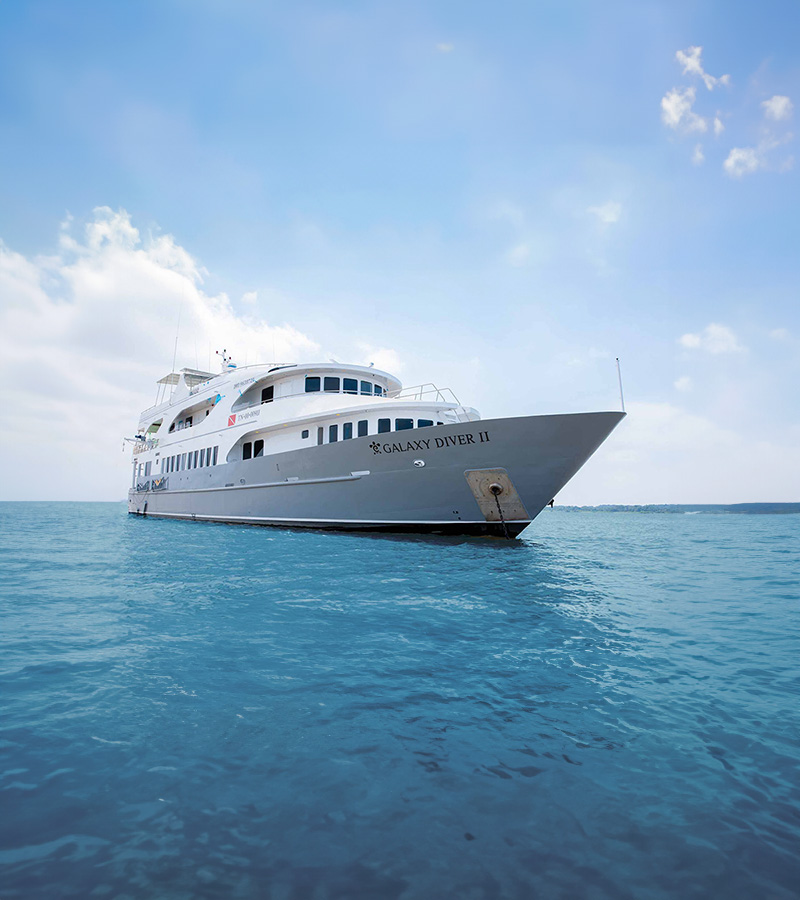

The Galapagos archipelago is located at a point where major ocean currents come together, mingling nutrient rich cool waters from the south, warm currents from the north, and a deep cold current from the west. This convergence of ocean currents has combined flora and fauna from contrasting environments, and given rise to unique marine species. Nearly 20% of marine life in Galapagos is endemic, found nowhere else on earth. This level of endemism is rare for marine species, which tend to migrate and intermingle to a much larger degree than terrestrial (land-based) species. The Galapagos Islands are home to the world’ s only marine iguana and the most northern-living penguin. Coral beds share the same waters as fur seals.
Galapagos is one of the only places where pelagic species — species that live neither close to the bottom of the ocean nor near the shore — can be seen close to shore, such as tunas, spotted eagle rays, golden rays, and hammerhead sharks. No other site in the world showcases such a diversity of marine life forms. Additionally, geological and biological processes in Galapagos have helped create a high variety of habitats relative to other marine areas in the eastern Pacific. Coastal areas include vertical cliffs, sandy beaches, rocky shores, mangroves, coral reefs, lagoons, and salt flats (hypersaline panne habitats).

The person who rents the equipment is responsible for any loss or damage to the rented equipment while in his/her possession and agrees to return it in the same condition as received. All rental gear must be rinsed with fresh water and properly cleaned before it is returned. In case of damages, the renter will have to cover its expenses
| GEAR | 7 NIGHTS CRUISE |
| BCD | $75,00 |
| BOOTS & HOODS | $80,00 |
| DIVE COMPUTER | $70,00 |
| FINS | $30,00 |
| SNORKELING EQUIP. | $20,00 |
| REGULATOR WITH OCTOPUS AND CONSOLE | $75,00 |
| WETSUIT 7mm (full length) | $70,00 |
| 15L Aluminum Tank | $80,00 |
| MASK (frameless) | $25,00 |
| GLOVE 1.5 mm Tropic (only for sale) | $5,00 |
| FULL DIVE KIT | $275,00 |
| NITROX Course | $250,00 |
| Dive Alert or SMB | $50 USD replacement cost |
| Nautilus Lifeline | $250 USD replacement cost |
| Nitrox Analyzer or Computer | $350 USD replacement cost |
| Weight Belt with weight (non emergency loss) | $75 USD replacement cost |
| Mask | $100 USD replacement cost |
| Fins | $100 USD replacement cost |
| Booties | $50 USD replacement cost |
| Wetsuit, BC, Regulator, Hoses | $50 - $750 USD replacement cost |
Notes: Full dive kit includes BCD, regulators, wetsuit, mask, booties, hoods and fins only.
Net price per person and must be requested prior arrival in order to guarantee service